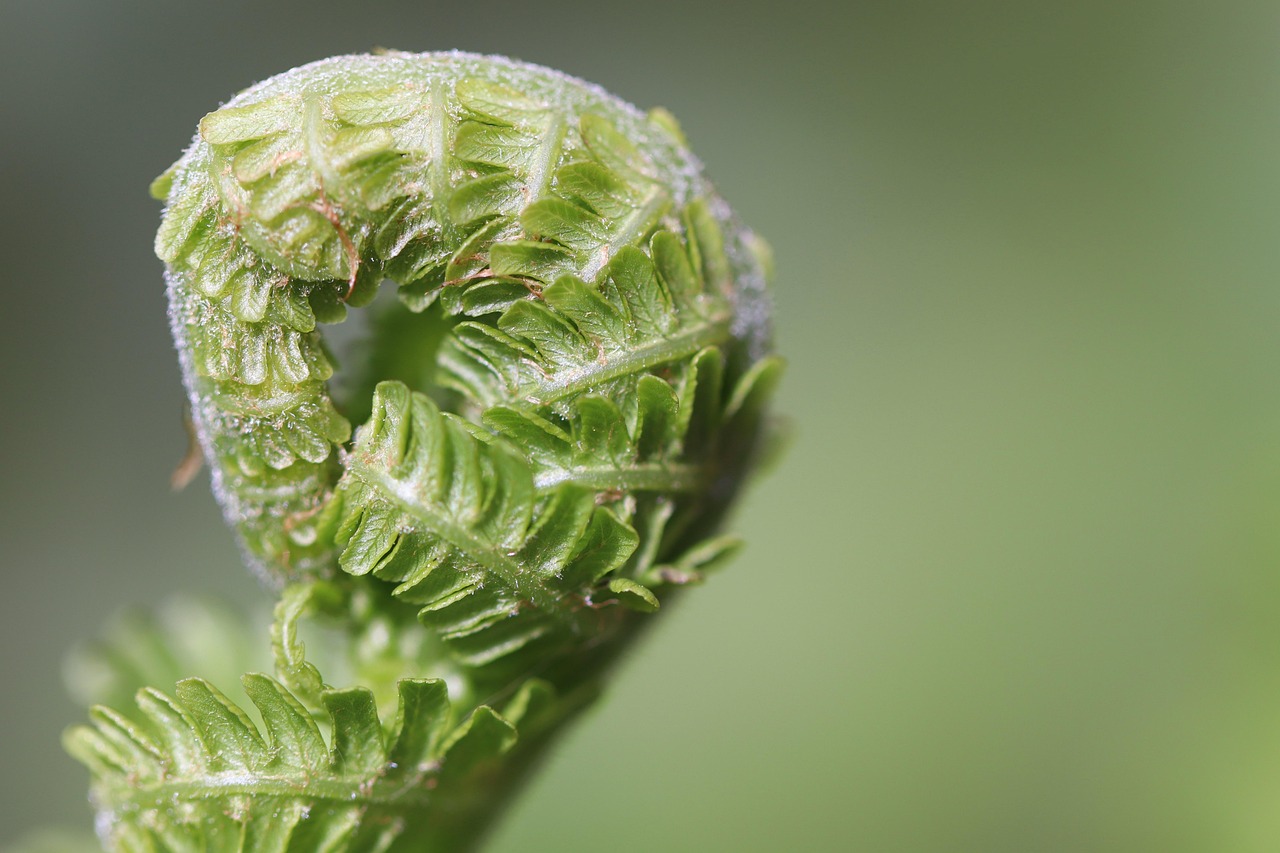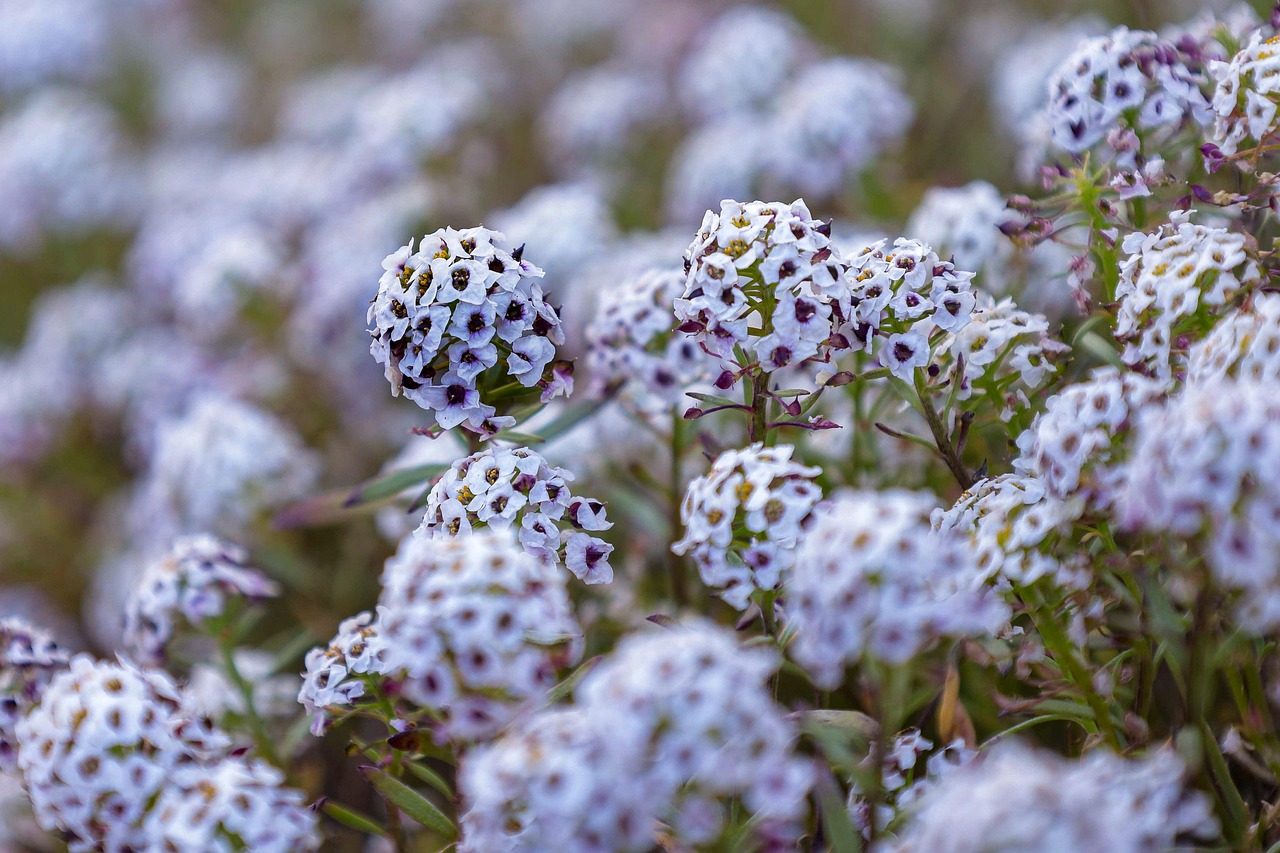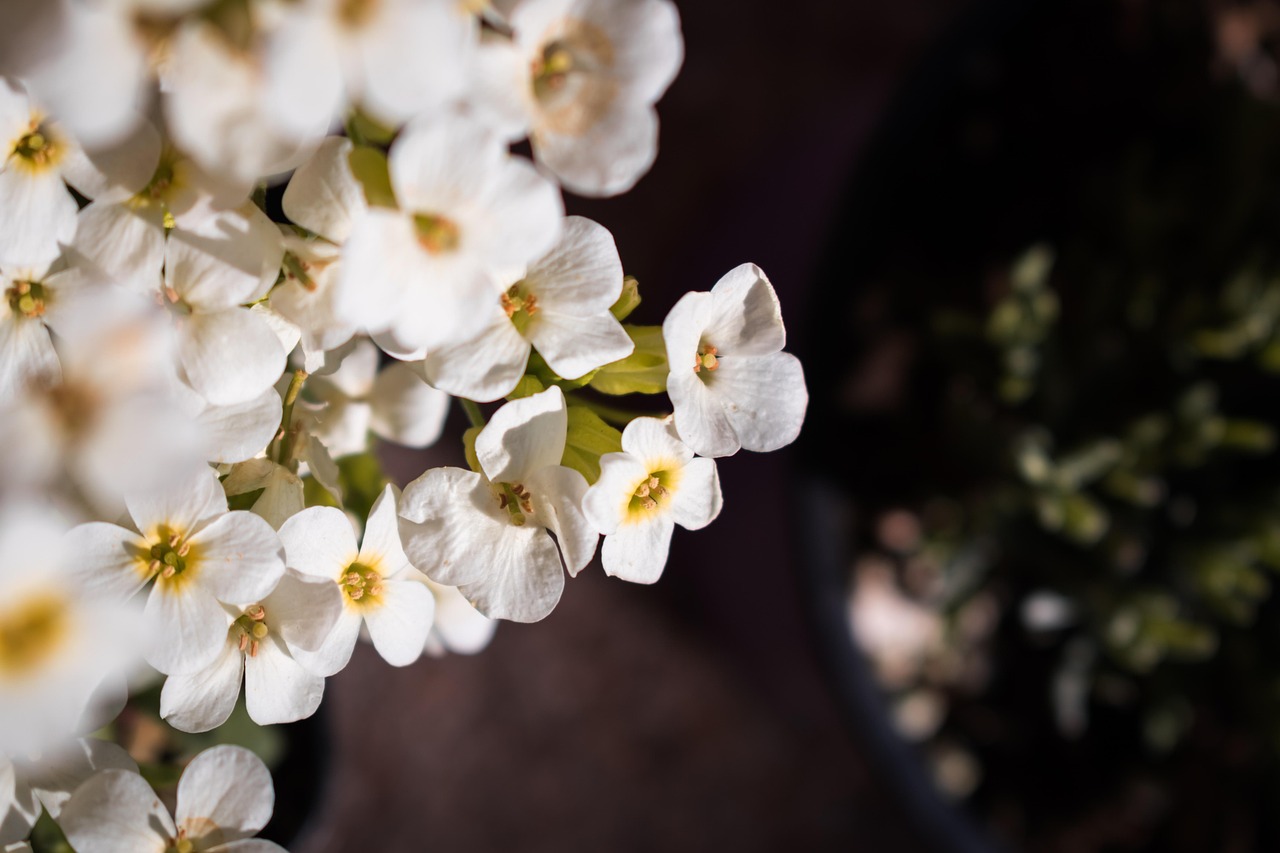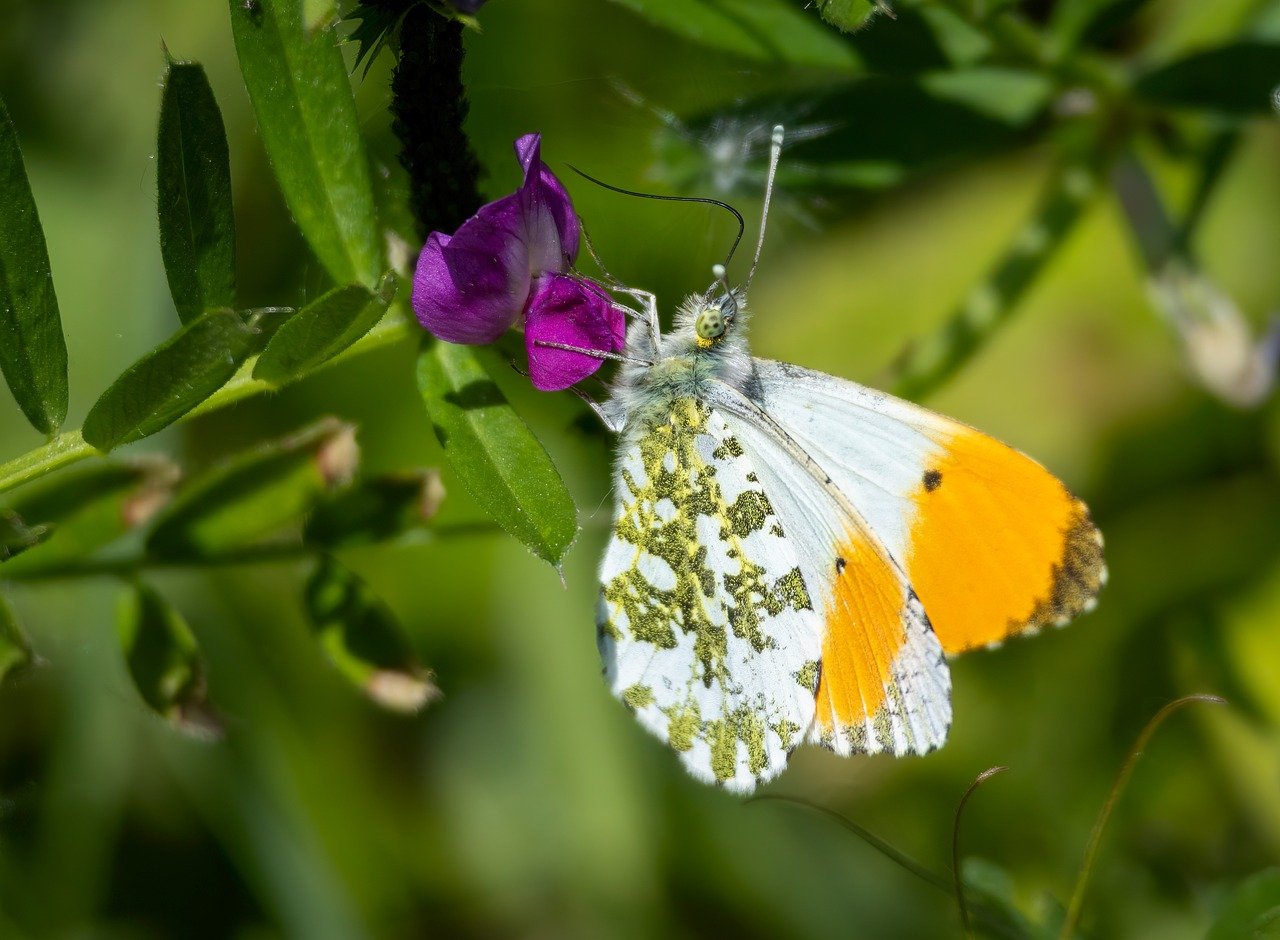To grow Sweet Alyssum successfully, ensure they have well-draining soil, full sun to partial shade, and consistent watering. Fertilize lightly and deadhead regularly to promote blooming. These fragrant flowers attract pollinators and can enhance the vibrancy of any garden.
Sweet Alyssum, known scientifically as Lobularia maritima, is a popular flowering plant that adds charm and color to gardens. These low-growing annuals are celebrated for their delicate clusters of small flowers, which bloom in shades of white, purple, and pink. Their sweet fragrance attracts beneficial insects, making them an excellent choice for gardeners looking to create a vibrant and inviting outdoor space.

One of the reasons Sweet Alyssum is favored by many gardeners is its versatility. It can thrive in various garden settings, including borders, containers, and hanging baskets. Additionally, these plants are relatively easy to care for, making them suitable for both novice and experienced gardeners alike. With the right growing conditions and care, Sweet Alyssum can produce lush blooms throughout the growing season.
Understanding Sweet Alyssum
Before diving into the growing tips for Sweet Alyssum, it’s essential to understand their characteristics and needs. Here are some key points about this delightful plant:
| Characteristic | Description |
|---|---|
| Botanical Name | Lobularia maritima |
| Plant Type | Annual |
| Height | 4 to 6 inches |
| Flower Colors | White, purple, pink |
| Sun Requirement | Full sun to partial shade |
| Soil Type | Well-draining soil |
Sweet Alyssum is particularly known for its ability to spread and fill in spaces quickly. This growth habit makes it an excellent choice for ground cover or as a filler in mixed plantings. The plant’s low profile also allows it to complement taller plants beautifully, adding depth and color variations to your garden design.

The growing season for Sweet Alyssum typically begins in early spring. They can be sown directly into the ground after the last frost or started indoors a few weeks before the last frost date. This flexibility in planting allows gardeners in various climates to enjoy these lovely flowers.
Site Selection and Soil Preparation
Choosing the right location is crucial for the success of Sweet Alyssum. Ideally, they prefer a sunny spot that receives at least six hours of sunlight each day. However, they can tolerate some shade, especially in hotter climates where afternoon sun can be intense.
The soil should be well-draining to prevent waterlogging, which can lead to root rot. Before planting, it is beneficial to amend the soil with organic matter such as compost. This amendment not only improves drainage but also adds nutrients that help promote healthy growth.

To test if your soil drains well, you can perform a simple drainage test. Dig a hole about 12 inches deep and fill it with water. If the water drains within an hour, your soil is likely well-draining. If not, consider raised beds or adding sand or perlite to improve drainage.
Watering and Fertilization
Sweet Alyssum requires consistent moisture to thrive. Regular watering is essential, especially during dry spells. However, it’s important not to overwater, as this can lead to root problems. Water deeply but infrequently to encourage strong root development.
In terms of fertilization, Sweet Alyssum does not require heavy feeding. A light application of a balanced fertilizer during planting can suffice. Too much fertilizer can lead to lush foliage at the expense of blooms, so it’s best to err on the side of caution.

Pest and Disease Management
While Sweet Alyssum is generally hardy, it can fall victim to certain pests and diseases. Understanding how to identify and manage these issues will help keep your plants healthy and vibrant. Here are some common problems to watch for:
| Pest/Disease | Symptoms | Management Strategies |
|---|---|---|
| Aphids | Sticky residue on leaves; curled or distorted leaves. | Introduce beneficial insects like ladybugs or use insecticidal soap. |
| Spider Mites | Fine webbing on the undersides of leaves; yellowing foliage. | Increase humidity; spray with water or use miticides. |
| Downy Mildew | White, downy spots on leaves; yellowing and wilting. | Improve air circulation; avoid overhead watering. |
| Powdery Mildew | White powdery spots on leaves; stunted growth. | Apply fungicides; space plants properly for airflow. |
Regular monitoring of your Sweet Alyssum plants can help you catch these issues early. If you notice any signs of pests or disease, take action promptly to prevent further damage.
Proper Pruning Techniques
Pruning is an essential part of maintaining healthy Sweet Alyssum plants. Regular pruning encourages new growth and helps the plant remain bushy and vibrant. Here are some beneficial pruning tips:
- Deadheading: Remove spent flowers regularly to encourage continuous blooming. This practice prevents the plant from going to seed and promotes more flowers.
- Shaping: If your plants become leggy or overgrown, trim back the stems to promote a fuller appearance. This is best done in early spring or after the first blooms fade.
- Seasonal Pruning: At the end of the growing season, cut back the plants to ground level. This helps prepare them for winter and encourages robust growth in the following spring.
Proper pruning not only enhances the aesthetic appeal of your Sweet Alyssum but also supports overall plant health. As a general rule, always use clean, sharp tools to make precise cuts, which helps reduce the risk of disease transmission.
Companion Planting
Companion planting is a technique where certain plants are grown together for mutual benefits. Sweet Alyssum can serve as an excellent companion for a variety of other plants. Here are some recommended companions:
- Vegetables: Sweet Alyssum is known to attract beneficial insects that can help pollinate vegetables like tomatoes and cucumbers.
- Herbs: Planting Sweet Alyssum alongside herbs such as basil and parsley can deter pests and enhance growth.
- Flowers: Combine with other flowers like marigolds or petunias for a colorful display that attracts pollinators.
This practice not only improves the health of your garden but also creates a vibrant, diverse ecosystem that supports various beneficial insects. When selecting companion plants, consider their sunlight and water needs to ensure compatibility with Sweet Alyssum.
Seasonal Care Tips
The care requirements for Sweet Alyssum may change with the seasons. Here are some key seasonal care tips to follow:
Spring Care
In spring, it is crucial to prepare the garden for planting. Ensure that the soil is well-drained and amend it as necessary. Start seeds indoors or sow them directly into the garden after the last frost date. Regularly check moisture levels as temperatures begin to rise.
Summer Care
During the summer months, increased heat may require more frequent watering. Be vigilant about pests, as insects tend to be more active during this time. Deadheading spent flowers will encourage continued blooming throughout summer.
Fall Care
As temperatures begin to cool in fall, continue to monitor for pests and diseases. This is also an ideal time to prune back any leggy growth and prepare your plants for winter dormancy.
Winter Care
If you live in a region with mild winters, Sweet Alyssum may survive through the colder months. However, in areas with harsh winters, it’s best to treat them as annuals and replant in spring. Consider mulching around the base of the plants for added protection against frost.
By implementing these seasonal care tips, you can ensure that your Sweet Alyssum plants remain healthy and continue to thrive throughout the year.
Propagation Methods
Propagating Sweet Alyssum can be an enjoyable and cost-effective way to expand your garden. There are several methods to propagate this lovely plant, including seed sowing and cuttings. Each method has its benefits and can be chosen based on your gardening preferences.
Seed Sowing
Seed sowing is the most common method of propagating Sweet Alyssum. Here are the steps to successfully grow Sweet Alyssum from seeds:
- Timing: Start seeds indoors about 6 to 8 weeks before the last expected frost or sow them directly outdoors after the last frost.
- Soil Preparation: Use a seed-starting mix that is light and well-draining. Fill seed trays or pots with the mix.
- Sowing Seeds: Scatter the seeds on the surface of the soil. Do not cover them with soil, as they need light to germinate.
- Watering: Mist the soil lightly to keep it moist but not soggy. Cover the trays with plastic wrap to maintain humidity until germination.
- Light Requirements: Once the seeds germinate, provide plenty of light. A sunny windowsill or grow lights work well.
- Transplanting: When seedlings are about 2 inches tall and have a few sets of true leaves, transplant them into larger pots or directly into the garden.
Cuttings
Propagation by cuttings can also be effective, especially for preserving specific varieties. Here’s how to do it:
- Choosing Cuttings: Select healthy stems from an existing Sweet Alyssum plant. Look for new growth that is not yet woody.
- Cutting Preparation: Using clean, sharp scissors, cut a 3 to 4-inch stem just below a node.
- Rooting Medium: Place the cut end in a glass of water or directly into a pot filled with a moist potting mix.
- Humidity: If using soil, cover the pot with a plastic bag to create a humid environment until roots develop.
- Transplanting: Once roots form, transplant the new plant into the garden or a larger container.
Creating Beautiful Displays
Sweet Alyssum is not only easy to grow but also incredibly versatile in garden design. Its low-growing nature makes it perfect for various planting schemes. Here are some ideas for creating beautiful displays with Sweet Alyssum:
Container Gardens
Sweet Alyssum works wonderfully in containers due to its compact size and trailing habit. Here are some tips for container gardening with Sweet Alyssum:
- Choosing Containers: Select pots with drainage holes to prevent water accumulation.
- Mixing Plants: Pair Sweet Alyssum with taller plants such as geraniums or petunias for a stunning contrast in height and color.
- Seasonal Displays: Update container arrangements seasonally to keep your displays fresh and exciting.
Borders and Edging
Sweet Alyssum is an excellent choice for borders and edging due to its ability to spread and create a lush carpet of flowers. Consider these tips:
- Planting Density: Space plants about 6 to 12 inches apart for a fuller appearance as they grow.
- Complementary Colors: Choose contrasting colors for nearby plants to highlight the delicate blooms of Sweet Alyssum.
- Mowing Technique: For edges, you can mow over Sweet Alyssum lightly after flowering to keep them neat and encourage new growth.
Caring for Sweet Alyssum in Different Climates
The climate in which you are growing Sweet Alyssum can influence its care requirements. Here are some considerations for growing in various conditions:
Tropical Climates
In tropical regions, Sweet Alyssum may thrive but can be susceptible to heat stress. To help your plants survive:
- Avoid Afternoon Sun: Provide shade during the hottest part of the day to prevent wilting.
- Consistent Watering: Increase watering frequency to keep the plants hydrated in warm temperatures.
- Pest Control: Be vigilant about pests like aphids that may thrive in warm, humid conditions.
Temperate Climates
In temperate regions, Sweet Alyssum typically grows well. Consider these tips for optimal growth:
- Frost Protection: Be prepared to cover plants if frost is expected in late spring or fall.
- Adequate Sunlight: Ensure your plants receive full sun for the best blooming performance.
- Diverse Planting: Create mixed beds that incorporate other annuals and perennials for a vibrant display throughout the seasons.
Cold Climates
If you live in a colder climate, consider these strategies for growing Sweet Alyssum:
- Start Indoors: Begin seeds indoors to give them a head start before transplanting outside after the last frost.
- Use Row Covers: Protect young plants with row covers during unexpected cold snaps in spring.
- Treat as Annuals: In harsh winters, treat them as annuals and replant every spring for consistent blooms.
No matter your climate, with the right care and attention, Sweet Alyssum can flourish and enhance your garden’s beauty all season long.
Additional Tips for a Thriving Sweet Alyssum Garden
Beyond the basic care and propagation methods, there are several additional tips that can help ensure your Sweet Alyssum plants thrive and enhance your garden’s overall vibrancy. These tips focus on creating the optimal environment for growth and maximizing the aesthetic appeal of your garden.
Enhancing Soil Quality
The quality of the soil in which Sweet Alyssum is planted can significantly affect its growth and blooming potential. Here are some ways to enhance soil quality:
- Organic Matter: Regularly incorporate organic matter such as compost or well-rotted manure into the soil. This practice improves nutrient availability and soil structure.
- Mulching: Apply a layer of organic mulch around the base of the plants to conserve moisture, suppress weeds, and regulate soil temperature.
- Soil Testing: Conduct a soil test to determine pH and nutrient levels. This information can help you amend the soil appropriately to meet Sweet Alyssum’s needs.
Seasonal Transitions and Planting Techniques
As seasons change, adapting your planting techniques can help you maintain a beautiful Sweet Alyssum display. Consider the following:
- Succession Planting: To extend the blooming period, practice succession planting by sowing seeds every few weeks. This approach ensures that new plants will continuously bloom as older ones fade.
- Interplanting: Use interplanting techniques by placing Sweet Alyssum among other flowering plants. This method not only enhances visual appeal but also attracts beneficial pollinators to your garden.
- Seasonal Color Coordination: Choose companion plants that bloom in different seasons. For example, pair Sweet Alyssum with early spring bloomers to create a stunning display throughout the growing season.
Using Sweet Alyssum for Environmental Benefits
In addition to their beauty, Sweet Alyssum provides several environmental benefits that can enhance your garden’s ecosystem:
- Pollinator Attraction: The sweet fragrance and small flowers draw in bees, butterflies, and other beneficial insects, promoting pollination across your garden.
- Erosion Control: The dense growth habit of Sweet Alyssum can help stabilize soil and prevent erosion, making them ideal for sloped gardens.
- Companion Planting Benefits: When planted alongside vegetables and herbs, Sweet Alyssum can act as a natural pest deterrent, reducing the need for chemical interventions.
Conclusion
Growing Sweet Alyssum can be a rewarding experience that enhances not only the beauty of your garden but also its ecological health. By providing proper care, understanding propagation methods, and implementing effective gardening techniques, you can cultivate a vibrant display of these charming flowers. Remember to monitor your plants regularly for pests and diseases, ensure they receive adequate sunlight and water, and consider their growing environment based on your climate. With these tips in mind, Sweet Alyssum can flourish throughout the season, offering delightful fragrance and color to your outdoor spaces.
Embrace the joy of gardening with Sweet Alyssum, knowing that their low maintenance needs and stunning blooms will bring life to your garden for years to come. Whether you’re planning a flowerbed, container garden, or mixed planting arrangement, Sweet Alyssum is an excellent choice that will not disappoint.
